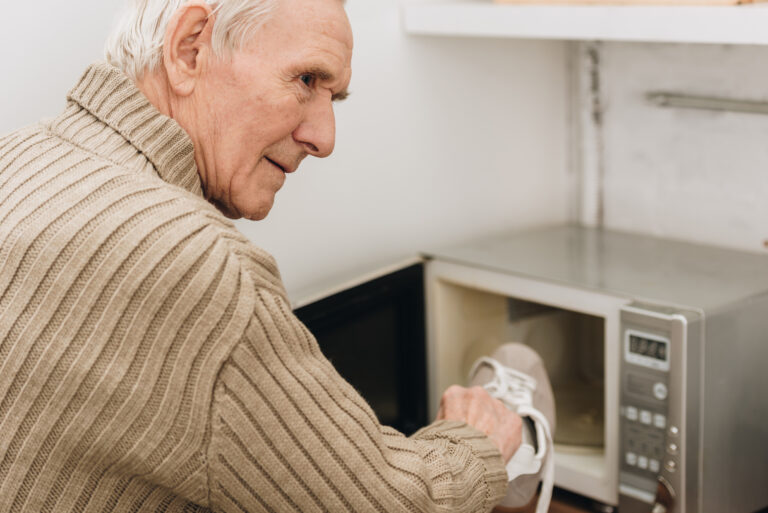As our loved ones age, they may begin to experience cognitive decline, one of the most common being Alzheimer’s disease. Alzheimer’s is a progressive neurological disorder that affects memory, thinking, and behavior. As a caregiver or family member of someone with Alzheimer’s, it can be challenging to find ways to assist them in daily activities while maintaining their independence and dignity. One task that can become increasingly difficult for a person with Alzheimer’s is taking a shower. To make this task easier and safer, a shower chair can be a valuable tool. In this article, we will discuss how to help a person with Alzheimer’s use a shower chair.
What is a Shower Chair?
A shower chair is a waterproof and durable seat designed for use in the shower. It provides stability and support for those who have difficulty standing for long periods or are at risk of falling. Shower chairs come in various styles and sizes, including adjustable heights and removable arms and backs. They are also lightweight and easy to clean, making them perfect for use in the bathroom.
Step 1: Introduction to the Shower Chair
Before introducing the shower chair, it is essential to explain its purpose to the person with Alzheimer’s. Explain that the chair will help them stay safe while taking a shower and provide them with comfort and support. It may also be helpful to show them how the chair works by sitting on it yourself or demonstrating with another family member.
Step 2: Familiarize the Person With the Chair
Familiarizing the person with the shower chair is crucial in making them feel comfortable with using it. Encourage them to touch and explore the chair, allowing them to see how sturdy and secure it is. You can also let them try sitting on it outside of the shower first to get used to the feeling of sitting on a chair in a different environment.
Step 3: Establish a Routine
Routine is essential for individuals with Alzheimer’s as it helps them feel more in control and comfortable. Establish a set time and day for showering, and make sure to stick to it as closely as possible. This routine will help them remember when to expect to use the chair and reduce any anxiety or confusion.
Step 4: Simplify the Shower Space
Individuals with Alzheimer’s may become overwhelmed by too many objects in their surroundings. Simplifying the shower space by removing unnecessary items and keeping it clutter-free can help reduce any potential distractions or confusion. Ensure that the shower chair is easily accessible and visible to the person with Alzheimer’s.
Step 5: Use Visual Cues
Using visual cues can assist in guiding the person with Alzheimer’s through the showering process. For example, you can place a picture or a written reminder next to the shower chair to remind them of the steps they need to take. You can also use colored strips of tape to mark where they should place their hands and feet when getting in and out of the shower.
Step 6: Provide Gentle Guidance
It is normal for individuals with Alzheimer’s to forget how to use the shower chair, even if they have used it before. Be patient and provide gentle guidance as needed. Remind them how to sit on the chair and how to use the handles for support. It may also be helpful to use a hand-over-hand technique to guide them through the motions.
Step 7: Allow Independence
While it is essential to be present and assist when needed, it is also vital to allow the person with Alzheimer’s as much independence as possible. Encourage them to wash themselves, and only step in if necessary. Allowing them to maintain their privacy and dignity can help boost their confidence and self-esteem.
Step 8: Ensure Safety
Safety should always be a top priority when using a shower chair. Make sure the chair is stable and secure before the person with Alzheimer’s gets in. Check the water temperature to ensure it is not too hot or cold. Also, stay close by during the shower in case they need assistance.
Step 9: Praise and Encouragement
Showering can be a daunting task for individuals with Alzheimer’s. Be sure to provide plenty of praise and encouragement throughout the process. Let them know they are doing a great job, and do not hesitate to show your appreciation for their efforts.
Step 10: Adapt as Needed
As Alzheimer’s is a progressive disease, it is essential to adapt your approach as needed. As the person’s abilities change, you may need to adjust the shower chair or add additional support, such as a shower bench or handheld showerhead. Continuously monitor their safety and comfort and make changes accordingly.
Taking a shower may seem like a simple task, but for someone with Alzheimer’s, it can be a challenging and overwhelming experience. By following these steps and using a shower chair, you can help your loved one maintain their independence and dignity while keeping them safe. Remember to be patient, provide encouragement, and adapt as needed. With these tips, showering can become a more manageable and enjoyable activity for both the person with Alzheimer’s and their caregiver.





